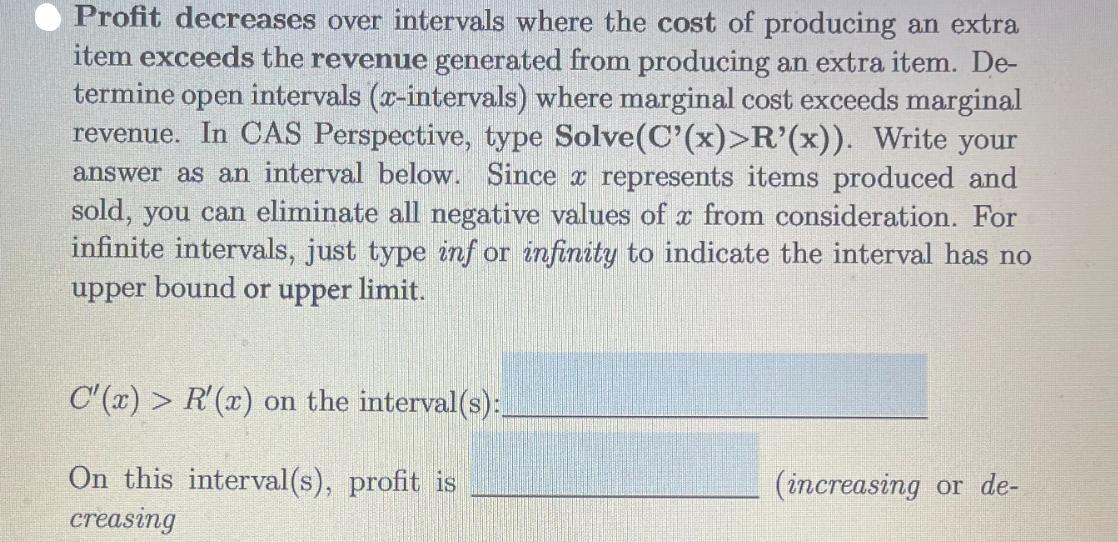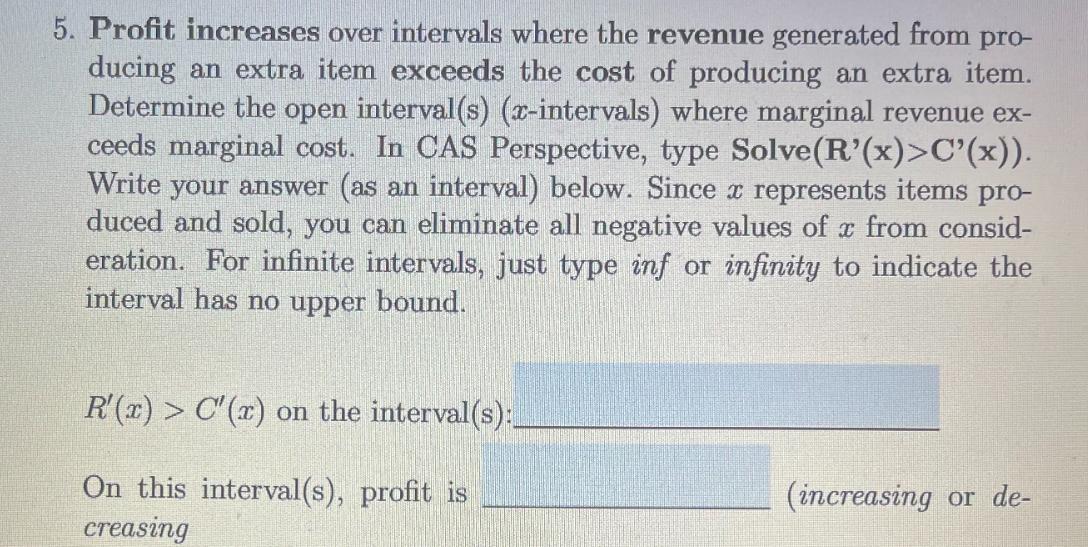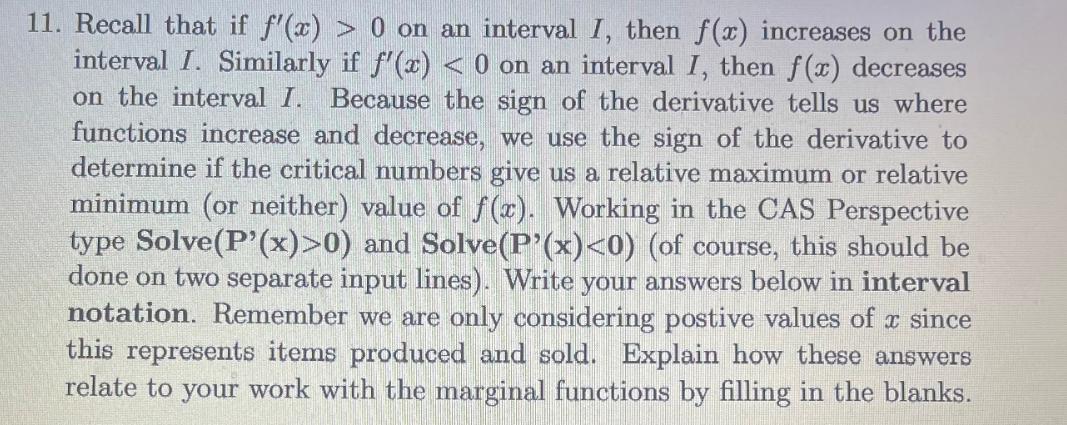Answered step by step
Verified Expert Solution
Question
1 Approved Answer
Profit decreases over intervals where the cost of producing an extra item exceeds the revenue generated from producing an extra item. De- termine open




Profit decreases over intervals where the cost of producing an extra item exceeds the revenue generated from producing an extra item. De- termine open intervals (x-intervals) where marginal cost exceeds marginal revenue. In CAS Perspective, type Solve(C'(x)>R'(x)). Write your answer as an interval below. Since a represents items produced and sold, you can eliminate all negative values of x from consideration. For infinite intervals, just type inf or infinity to indicate the interval has no upper bound or upper limit. C'(x) > R'(x) on the interval(s): On this interval(s), profit is creasing (increasing or de- 5. Profit increases over intervals where the revenue generated from pro- ducing an extra item exceeds the cost of producing an extra item. Determine the open interval(s) (x-intervals) where marginal revenue ex- ceeds marginal cost. In CAS Perspective, type Solve (R'(x)>C'(x)). Write your answer (as an interval) below. Since a represents items pro- duced and sold, you can eliminate all negative values of x from consid- eration. For infinite intervals, just type inf or infinity to indicate the interval has no upper bound. R'(x) > C'(x) on the interval(s):_ On this interval(s), profit is creasing (increasing or de- 10. Recall that local extreme values of a function can occur only at the crit- ical numbers of the function (domain values at which the derivative is equal to zero). Find the positive critical numbers of P(x) by typing Solve(P'(x)=0) in the CAS Perspective. Write your answer(s) in the space provided. Explain how these answers relate to your work with the marginal functions. Recall we are only considering x > 0. Critical Number(s) of P(x): x = items 11. Recall that if f'(x) > 0 on an interval I, then f(x) increases on the interval I. Similarly if f'(x) < 0 on an interval I, then f(x) decreases on the interval I. Because the sign of the derivative tells us where functions increase and decrease, we use the sign of the derivative to determine if the critical numbers give us a relative maximum or relative minimum (or neither) value of f(x). Working in the CAS Perspective type Solve(P'(x)>0) and Solve(P'(x)
Step by Step Solution
There are 3 Steps involved in it
Step: 1

Get Instant Access to Expert-Tailored Solutions
See step-by-step solutions with expert insights and AI powered tools for academic success
Step: 2

Step: 3

Ace Your Homework with AI
Get the answers you need in no time with our AI-driven, step-by-step assistance
Get Started


